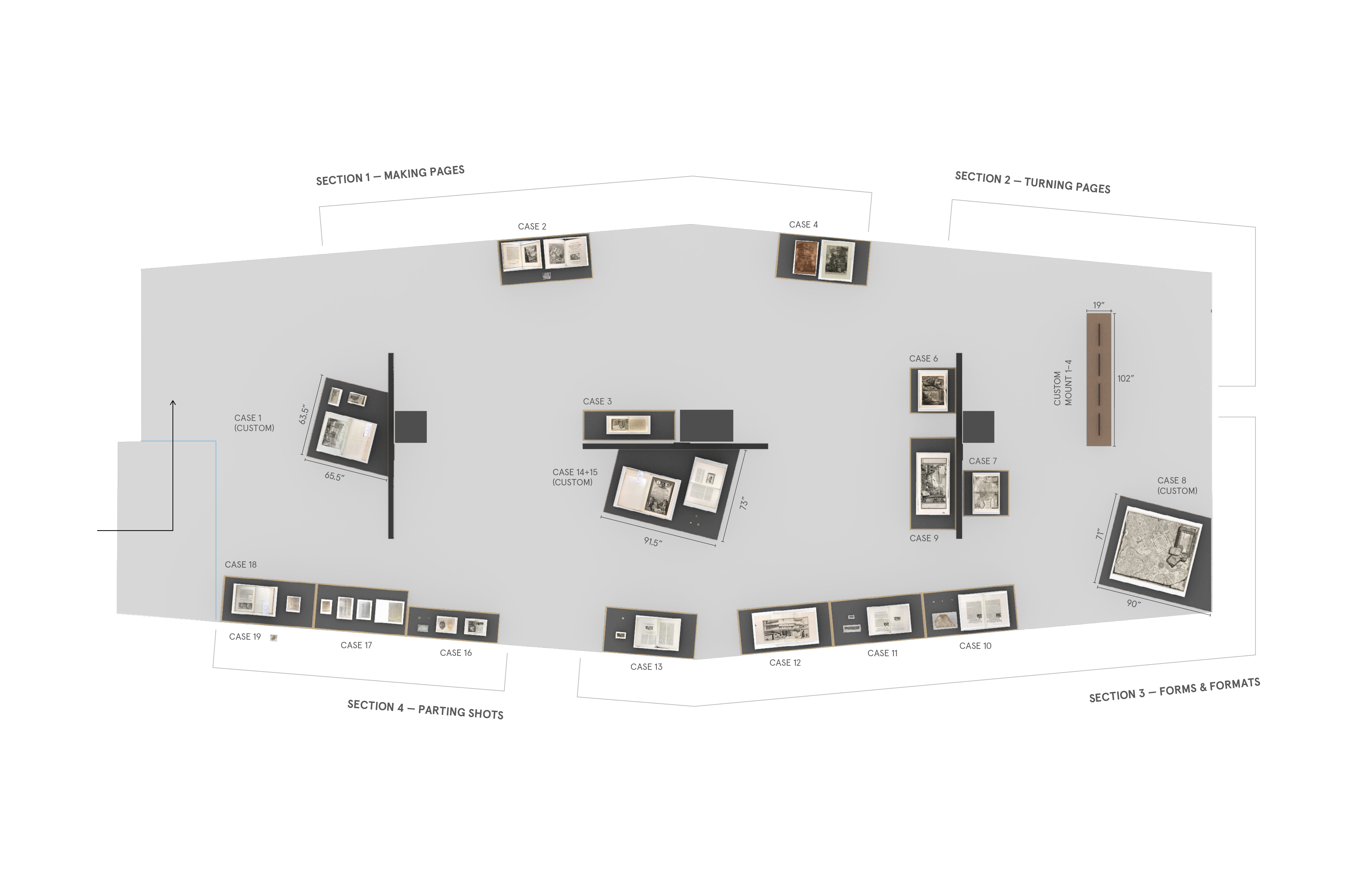Piranesi on the Page
Visual Identity, Exhibition, Architecture
Architecture and graphic design for Princeton University Library exhibition showcasing original books by Piranesi
Celebrating Piranesi as an architect of books
We worked closely with the Princeton University Library to design an exhibit featuring original volumes designed by Giovanni Battista Piranesi, the foremost printmaker of 18th-century Europe. Though Piranesi’s drawings and prints are popularly reproduced as loose sheets, they were originally bound within books. These paper monuments became a powerful means of creative expression—a printed, microcosmic architecture for a polymath designer who lacked opportunities to build physical structures. The design deploys sophisticated, customized typography: a contemporary interpretation of Piranesi’s own typesetting. Custom casework supports oversize objects, and a specialized architectural display allows visitors to view both the verso and recto of drawings never before displayed.

A framework to showcase rare and delicate objects
We designed trapezoidal oversize cases, which draw inspiration from the criss-crossing spatial organization of Piranesi's Carceri d'Invenzione drawing series. These facilitate the display of large books containing enormous original maps that fold out. The cases allow the maps to be shown while still attached to the books. Complementing the books are four two-sided drawings from different institutions that have never been shown together before. We designed a custom pedestal with minimalist double-sided frames—without any visible fasteners—to hold these precious pages.
A distinctly contemporary graphic framing
The exhibition graphic design is crisp and minimalist, yet it distinctly references Piranesi's work and the manner in which it was produced, reproduced, and shared. Elements such as the dramatic serif title type, the justified paragraphs, and the inset cutout images directly draw from Piranesi's own visual aesthetic. A range of typographic typologies work together to draw the visitor into the narrative of the artifacts and to bring to life the tangible circumstances that surrounded their creation and dissemination.



















